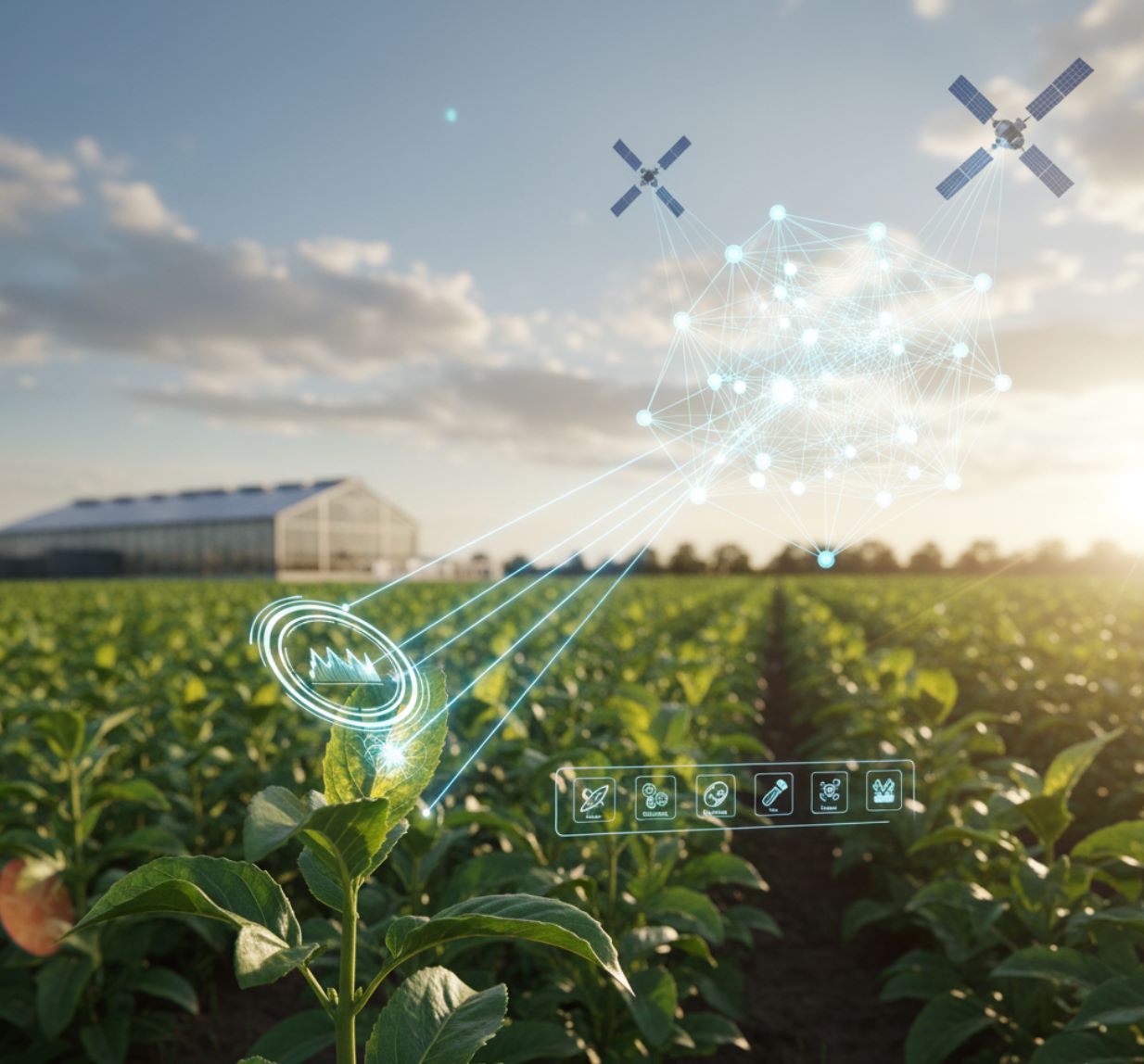AI application to identify weeds and remove them automatically
Weeds remain a persistent challenge in farming, competing with crops for sunlight, water, and nutrients. Today, the goal is not just to “kill weeds” with tractors or chemicals, but to remove them selectively without harming crops. With the power of artificial intelligence (AI) and robotics, modern machines can distinguish between crops and weeds through computer vision, then automatically eliminate weeds using precision spraying, mechanical tools, lasers, or heat. This innovation reduces costs, minimizes chemical use, and supports sustainable agriculture.
Weeds are a persistent problem in farming because they compete with crops for sunlight, water and nutrients. The challenge today isn't simply "killing weeds" (tractors and herbicides can do that) but doing so selectively – removing weeds without harming crops.
Cutting-edge AI and robotics now offer powerful new tools for this. By using computer vision and machine learning, modern farm machines can "see" individual plants, tell crop from weed, and then remove or zap the weeds automatically.
How AI Identifies Weeds
AI-driven weed control relies on computer vision and deep learning. Cameras mounted on tractors, sprayers, or small robots capture images of plants, and AI models (often convolutional neural networks, or CNNs) are trained to distinguish crops from weeds.
Carbon Robotics
John Deere
The result is that modern vision systems can flag weeds at pixel-level precision. They work in real time as the machine moves.
John Deere's See & Spray booms carry many cameras and onboard processors that scan thousands of square feet per second. Each tiny camera frame is analyzed by machine learning to decide "crop or weed?", and if it's a weed, the system instantly activates the spray nozzle for that spot.
— John Deere Technical Documentation
In effect, AI turns a tractor into a very smart robot equipped to identify even small, 2–3 leaf weeds in a field.
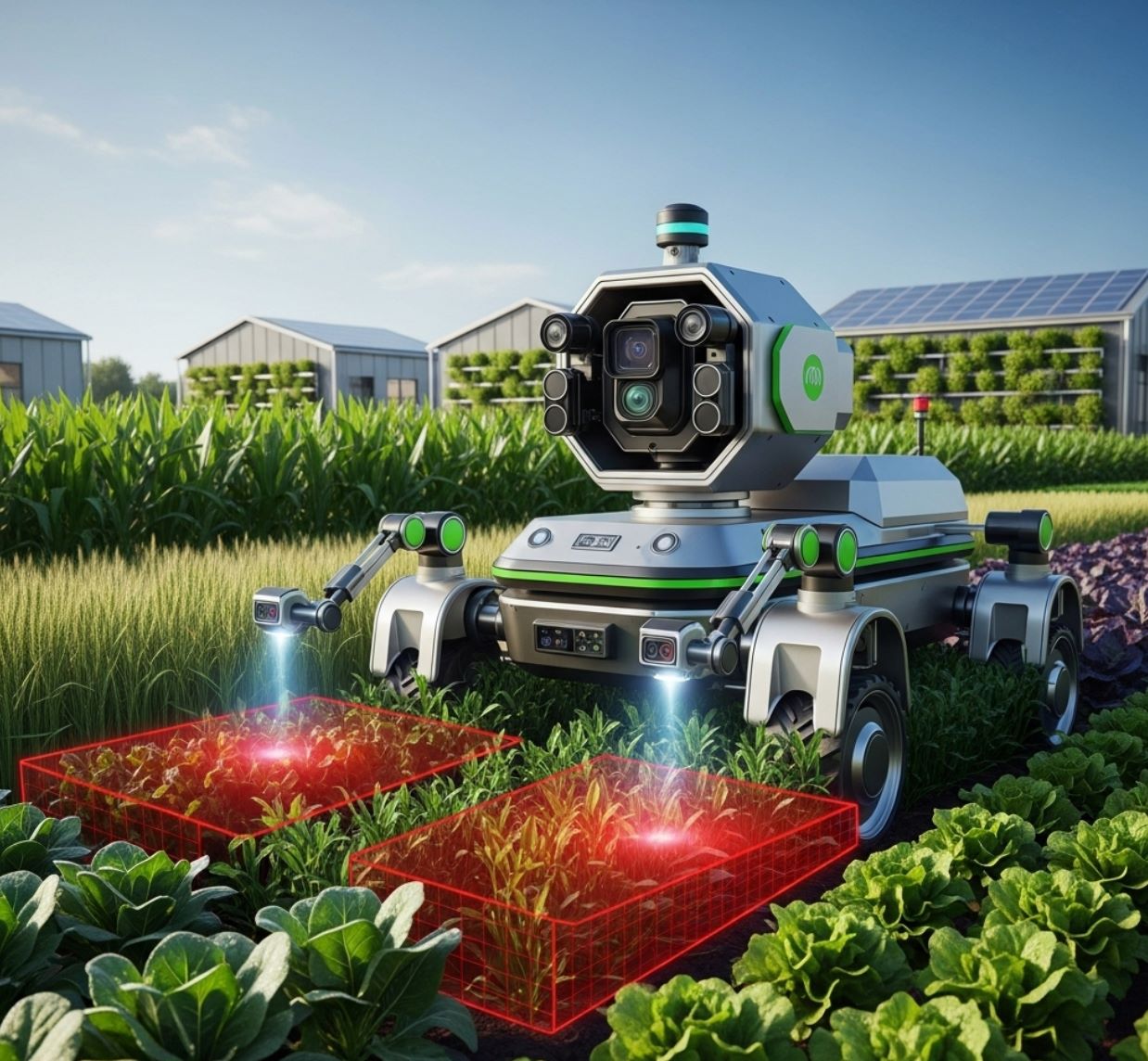
AI-Driven Weed Removal Methods
Once weeds are identified, different systems remove them in different ways. The three main approaches are targeted spraying, mechanical weeding, and laser or thermal weeding. All use AI vision to focus treatment only on weeds.
Precision Spraying (Spot Sprayers)
These systems mount cameras on a spray boom or mobile platform and fire herbicide only at detected weeds. John Deere's See & Spray system, for example, uses boom-mounted cameras and AI to cut herbicide use by about 59% on average.
High-Speed Operation
Scans fields at speeds up to 15 mph
- Real-time neural network processing
- Individual nozzle activation
Chemical Reduction
Dramatic herbicide savings
- 20× reduction in herbicide volume
- Up to 95% cut in chemical use
Mechanical Weeders
Some autonomous robots use physical tools instead of sprays. For instance, Aigen's Element robot (funded by major tech companies) combines cameras and AI with a mechanical "hoe" that cuts weeds at the root.
- Solar/wind powered operation
- Continuous weeding without chemicals
- Contact method leaves crops untouched
- Perfect for organic farming
Similarly, startups like FarmWise and Verdant Robotics have built AI-guided cultivators. The Verdant "Sharpshooter" robot, for example, uses computer vision to spray a tiny dose of herbicide only on each weed, cutting input use by ~96%. Mechanical methods are especially promising for organic or specialty crops where any herbicide use is problematic.
Laser and Thermal Weeding
A very novel method uses high-powered lasers or heat beams to kill weeds. Carbon Robotics (USA) has developed the LaserWeeder G2, a tractor-pulled machine with multiple 240-watt lasers and cameras.
Its vision system (powered by neural nets) scans plants and then fires the lasers to precisely burn out the weed's core tissues. This approach is chemical-free and extremely accurate: Carbon Robotics claims sub-millimeter targeting and can process millions of images per hour.
These different weeding methods can also be combined. For example, the University of Guelph built a tractor-mounted AI scanner that maps weed density in lima bean fields.
Farmers can then apply herbicide only on the mapped patches. In the future we may see integrated systems: a robot might use AI vision to decide whether to spray, cut, or burn a given weed depending on crop type and conditions.

Real-World Case Studies
Modern AI weeding technology is already in use on farms worldwide. Here are a few examples:
John Deere See & Spray
This industry-leading system has been widely adopted in large-scale grain farming. In trials in 2024, See & Spray sprayers treated over 1 million acres and saved ~8 million gallons of herbicide.
I reduced my herbicide costs by two-thirds using the system.
— Kansas Grower
Technically, See & Spray uses boom-mounted cameras and onboard neural networks to decide "weed or not." If it detects a weed, the machine triggers an individual nozzle, allowing point-precision application.
Carbon Robotics LaserWeeder
Founder Paul Mikesell (ex-Uber engineer) spent years developing an AI-driven laser weeder. His LaserWeeder G2 uses a trained CNN to find weeds and then shoots them with quick laser pulses.
- Runs entirely on the machine without cloud access
- Can eliminate weeds "as small as the tip of a pen"
- Operates day or night at scale
- Sub-millimeter accuracy
In practice, LaserWeeder units (pulled by tractors) can run day or night and mow through fields at scale. They have multiple cameras and GPUs per module, and operate with sub-millimeter accuracy. This precision means virtually no crop is harmed and no extra soil tillage is needed.
Ecorobotix ARA Sprayer
Switzerland's Ecorobotix makes a solar-powered, high-precision sprayer called the ARA. Its "Plant-by-Plant™" vision system uses deep learning to spot weeds at high speed.
Chemical Reduction
Up to 95% reduction in chemical use
Response Time
~250 milliseconds per plant decision
Tests show the AI can identify weed species to sub-centimeter accuracy while the machine moves, making decisions in ~250 milliseconds per plant. The company markets it for high-value vegetables and specialty crops where saving chemicals and labor is critical.
Verdant Robotics – Sharpshooter
A startup called Verdant Robotics built the Sharpshooter, a robot that uses computer vision to flag weeds and then delivers a tiny spray to each one.
Conventional Spraying
- High herbicide use
- Higher costs
- Environmental impact
AI-Guided Precision
- 96% herbicide reduction
- 50%+ cost savings
- Minimal environmental impact
This is another example of spot-spray technology enabled by AI, where the vision system does the work of an entire crew of sprayers.
University of Guelph Research
Researchers led by Dr. Medhat Moussa developed a prototype system for organic lima bean farms. An AI camera rig mounted on a tractor scans the field and produces a weed density map of pigweed (for example).
Image Capture
AI camera rig scans the field
AI Analysis
Algorithms distinguish lima beans from weeds
Density Mapping
Creates precise weed density map
This approach augments manual scouting: it saves time, reduces missed patches, and guides precise herbicide application.
Other Innovations
- Aigen (USA): Developing a fully autonomous wheeled robot, Element, that patrols fields, uses solar power, and physically uproots weeds using camera-guided blades.
- FarmWise (USA): Created the Vulcan and Titan robots which use proprietary machine-learning pipelines to identify and mechanically remove intra-row weeds on vegetable farms.
- Smart Cultivators: Penn State Extension reports on tractor-drawn "smart cultivators" (VisionWeeding's Robovator, Garford's Robocrop) that use machine vision to steer cultivation tools precisely.
- Aerial Drones: Even aerial drones equipped with multispectral cameras and AI algorithms can spot weed patches from above, helping to plan treatments.
In short, whether it's a big farm or a small specialty plot, AI-powered weeders are emerging in many forms.
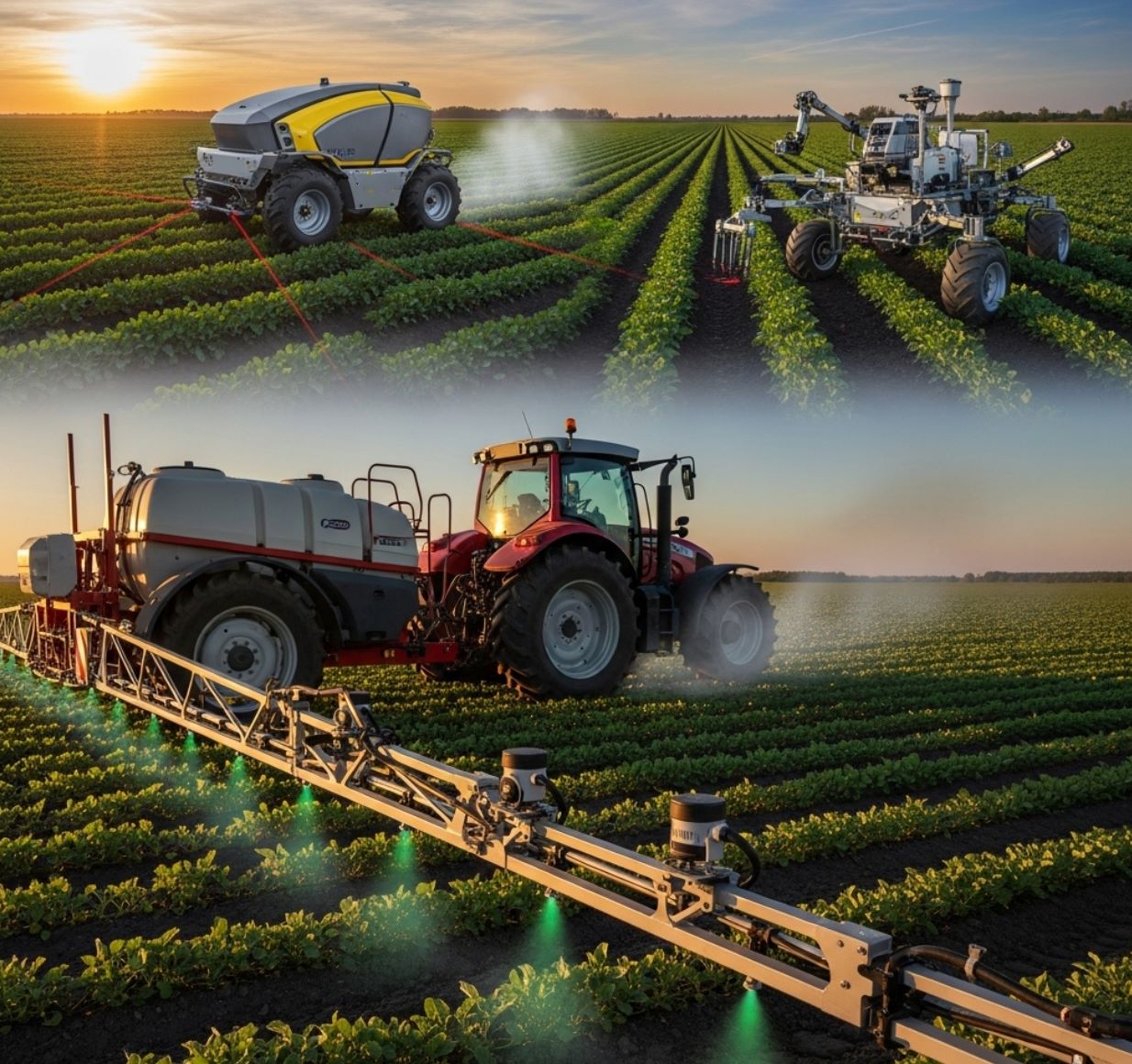
Benefits: Efficiency, Profitability and Sustainability
AI weed control brings clear advantages:
Dramatic Chemical Savings
By spraying only weeds, these systems cut herbicide volume drastically.
- John Deere reports millions of gallons saved
- Roughly 12 Olympic-sized pools on just 1 million acres
- Average savings of 60–76% in herbicide use
Higher Yields and Crop Health
Removing weeds earlier and more completely helps crops thrive.
- Eliminates small weeds humans might miss
- Healthier, more uniform crops
- Reduces future weed seed pressure
Labor and Time Savings
AI robots perform weeding labor automatically, freeing up human time.
- Up to 37% reduction in manual weeders needed
- Novice operators match expert performance
- Automated precision weeding
Environmental and Safety Gains
Less herbicide means less runoff into water and soil.
- Fewer passes over fields (cutting fuel use)
- No tillage in many cases (preventing soil erosion)
- Better farm safety (fewer people handling chemicals)
Cost Efficiency Analysis
| Cost Factor | Traditional Method | AI Weeding | Savings |
|---|---|---|---|
| Herbicide Costs | High volume application | Targeted application only | 60-95% reduction |
| Labor Costs | Manual weeding crews | Automated operation | 37% reduction |
| Equipment Time | Multiple field passes | Single precision pass | 50%+ time savings |
| ROI Timeline | N/A | Higher upfront cost | 1-3 years payback |
All these translate to cost savings. Besides herbicide reduction, farmers save on equipment time and hired help. John Deere and partners have found that even though precision sprayers cost more upfront, the ROI can come in just 1–3 years due to input savings. Many growers in trials lowered their per-acre weed control costs by half or more once fully using the AI system.
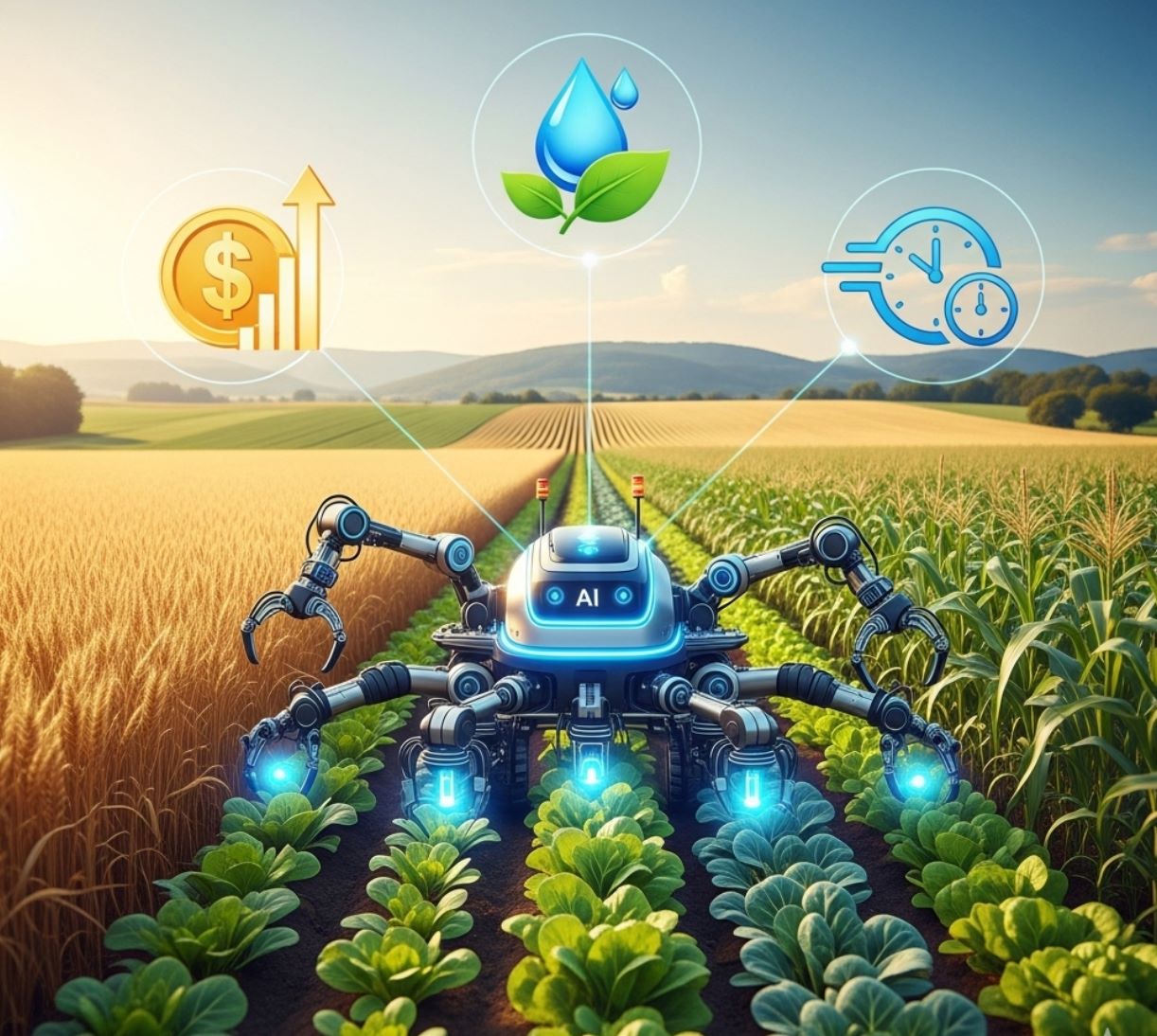
Challenges and Adoption
Despite the promise, AI weeding is still new and not yet ubiquitous. As of early 2024 only ~27% of U.S. farms use any precision-ag technology for tasks like weed control.
Current Barriers
- High equipment cost
- Need for specialized knowledge
- Concerns over data ownership and reliability
- Technology complexity concerns
- Fields with weeds that look too similar to crops
I was skeptical about See & Spray, but after using it I became a believer because it proved easy and effective.
— North Dakota Farmer
Growth Drivers
However, industry experts expect rapid growth. Rising input prices (fertilizer, herbicides, labor) and environmental pressures are pushing more farmers toward precision methods.
Equipment Makers
Startup Innovation
AI Integration
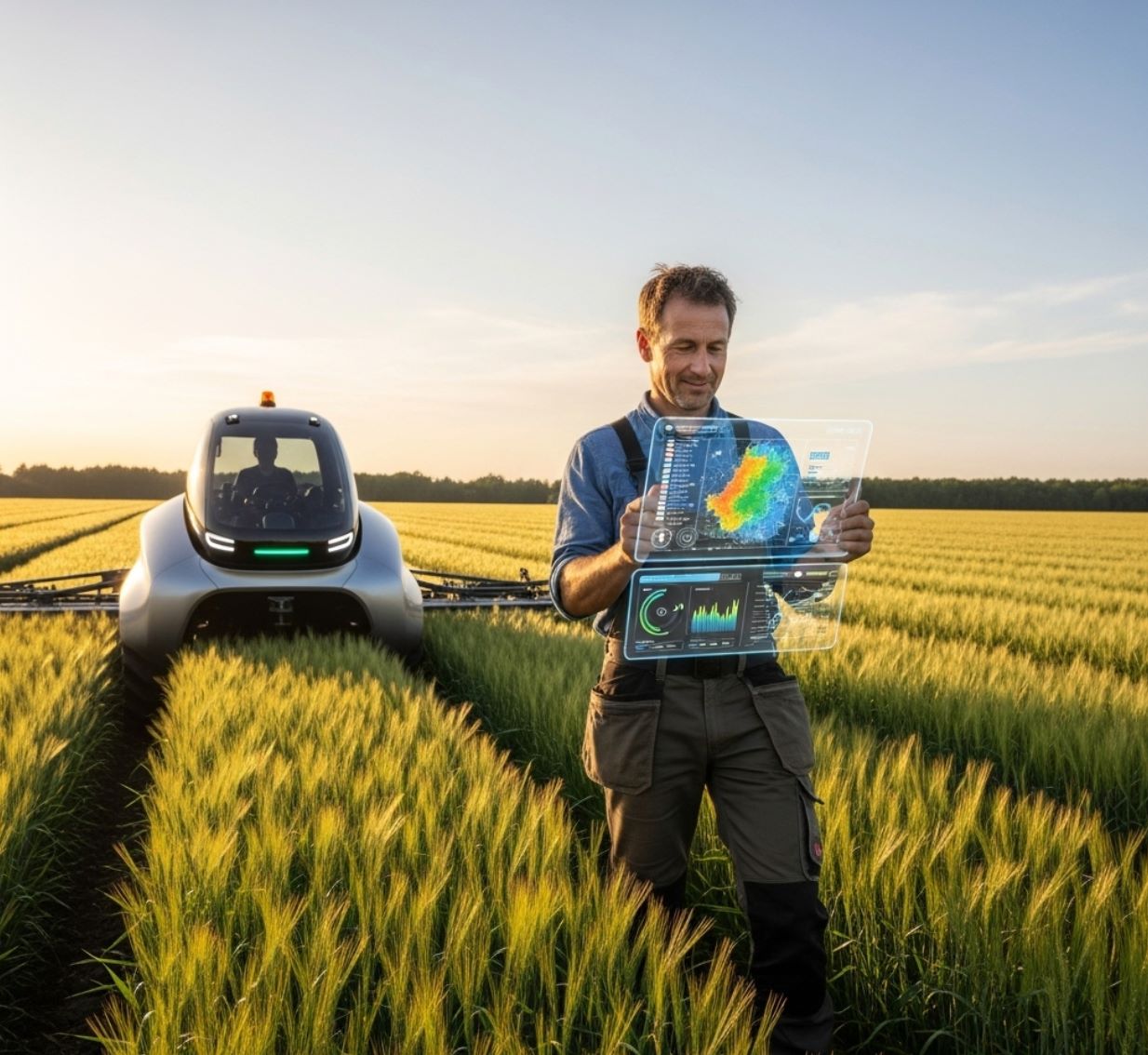
Outlook for the Future
AI-driven weed management is still evolving, but the trends are clear: smarter machines will increasingly handle routine weeding tasks.
Multi-Modal Sensing
Combine RGB cameras, multispectral imaging, even plant odor sensors
Dynamic Decision Making
Decide whether to spray, cut, or burn each weed dynamically
Integrated Systems
Integration with farm GPS and mapping tools for continuous learning
Farmers want "a tool that does everything" – AI is moving toward that vision by giving machines the flexibility to solve on-the-spot problems in a field.
— Agricultural Technology Expert
Global Sustainability Impact
Crucially, these AI solutions align with global needs for sustainable agriculture. Consumers and regulators are increasingly demanding lower chemical residues and eco-friendly farming.
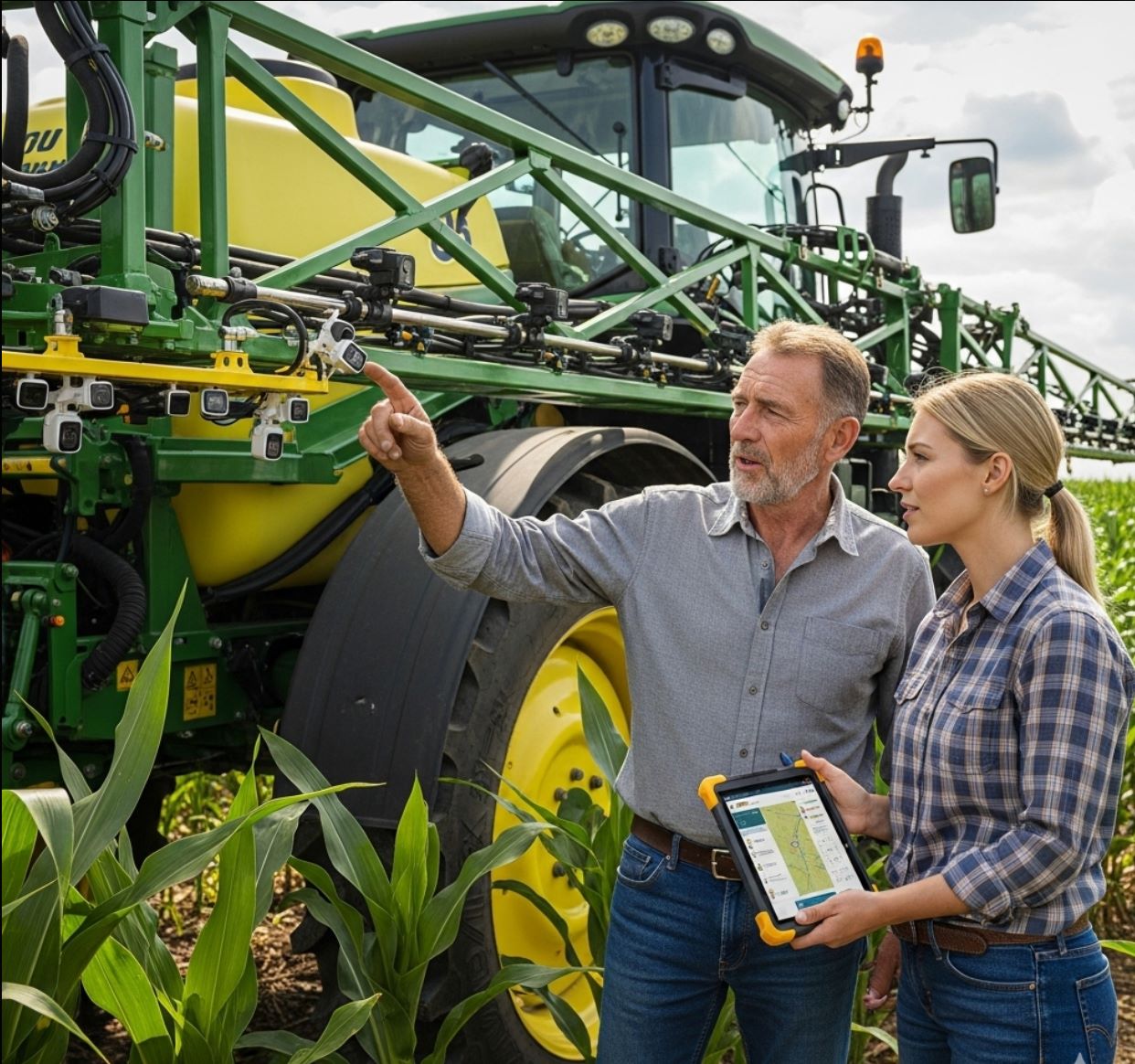
Chemical Reduction
80–95% herbicide reduction in some cases
Labor Solutions
Helps farms adapt to labor shortages
Climate Adaptation
Supports farms dealing with climate stress



